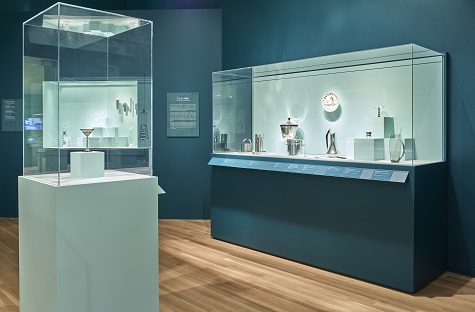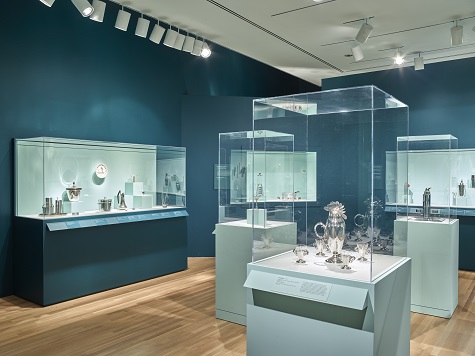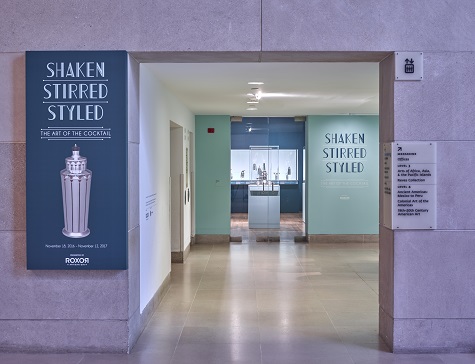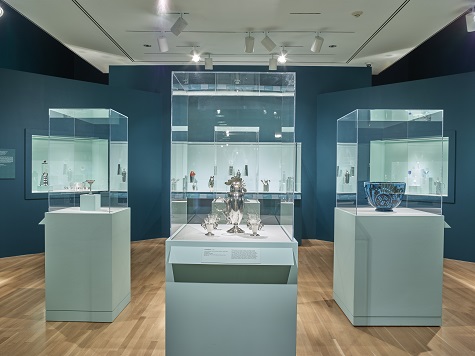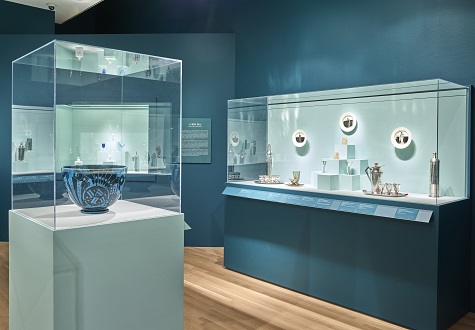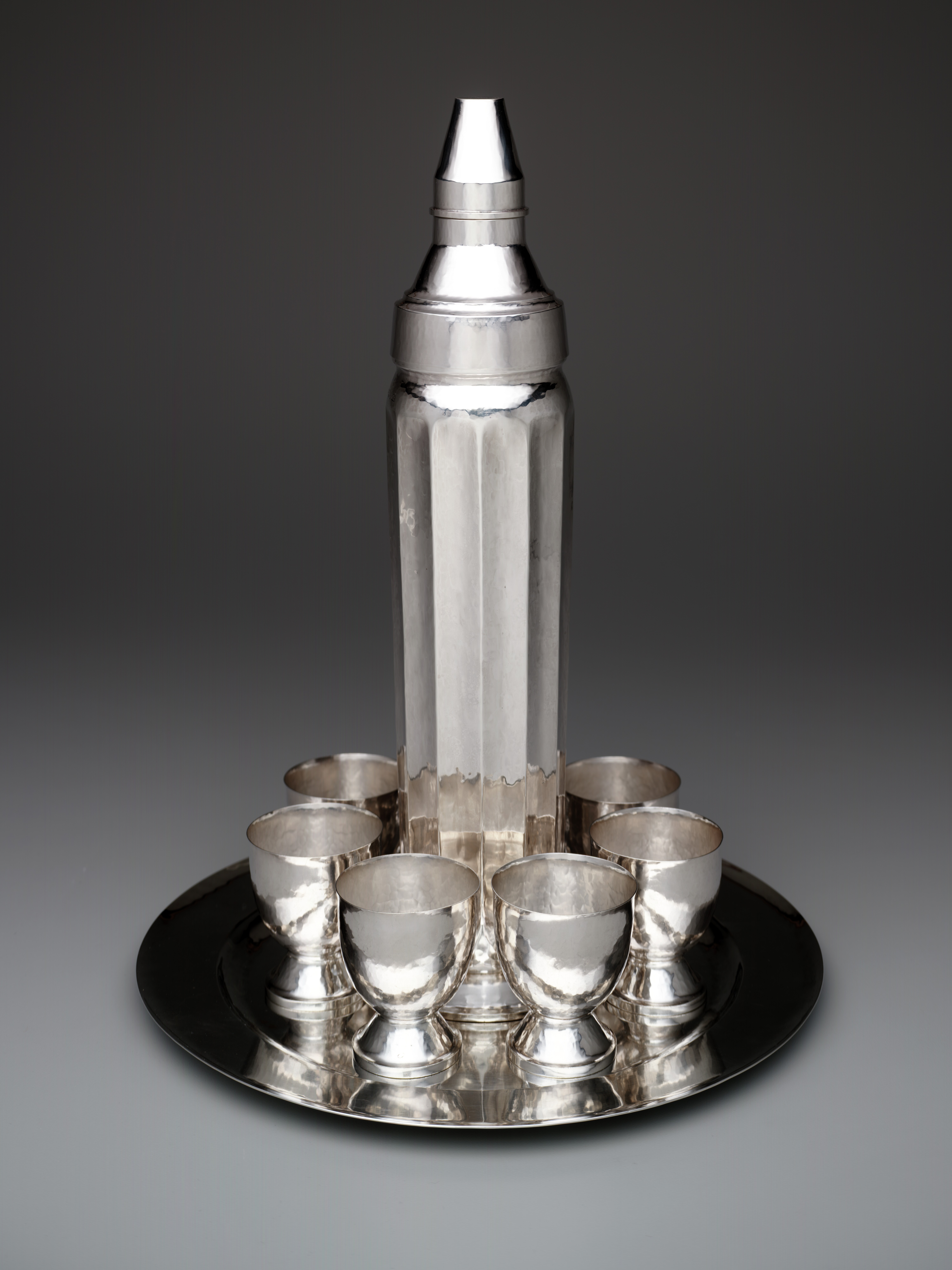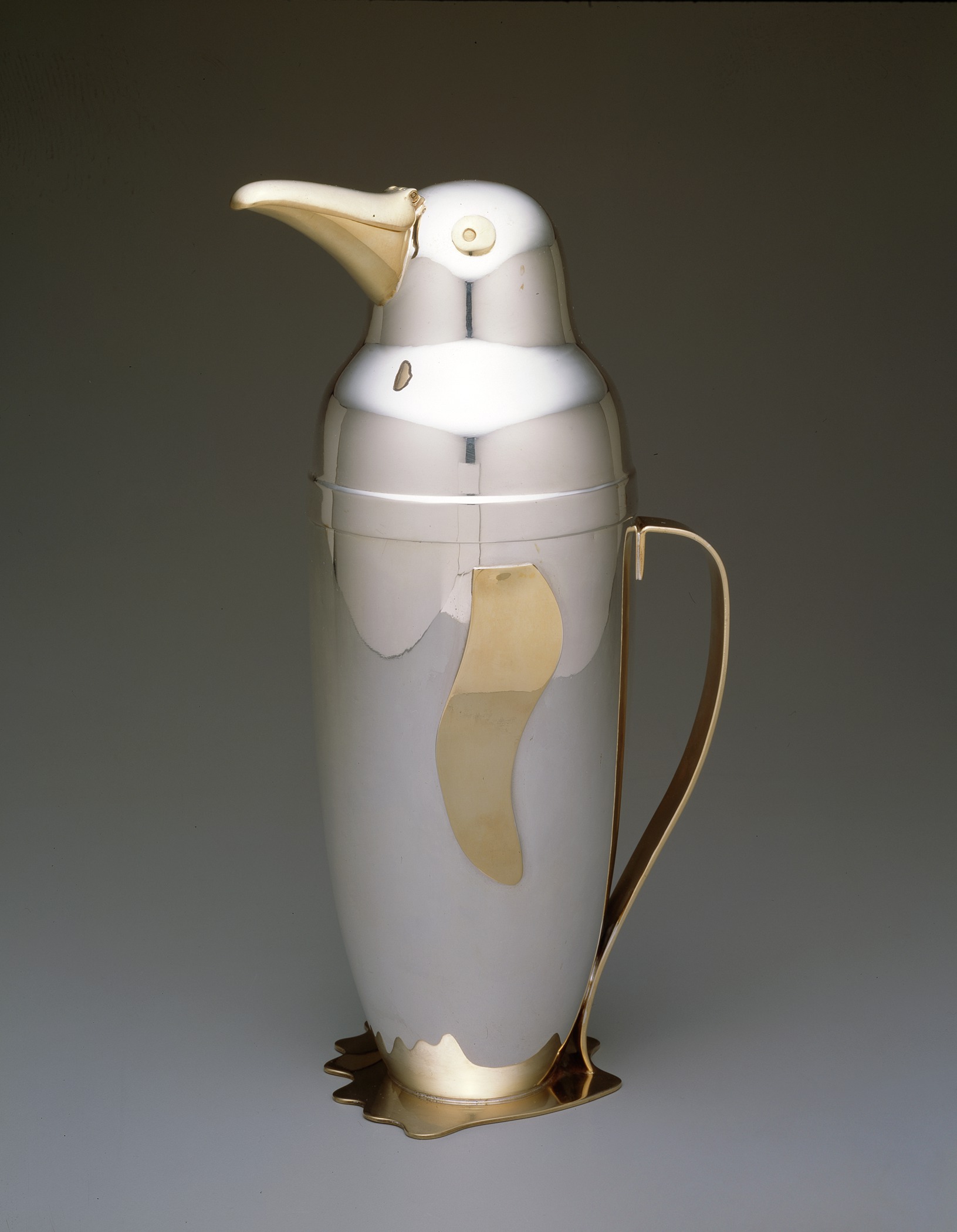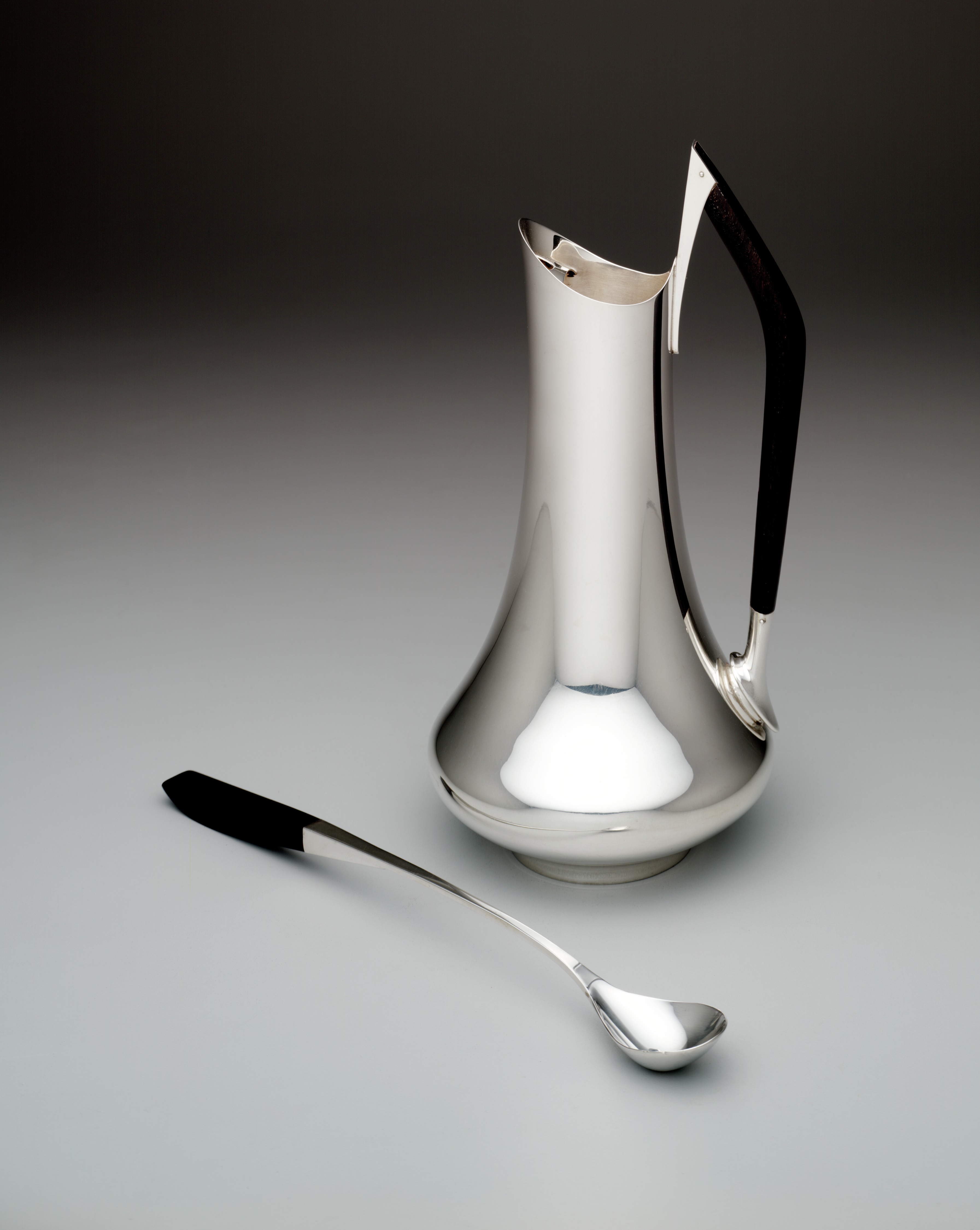It’s last call for Shaken, Stirred, Styled: The Art of the Cocktail at the DMA! Don’t miss this spirited exhibition full of various vessels and accessories for creating and knocking back cocktails in style.

Grand Prize punch bowl on stand, Libbey Glass Company (manufacturer), c. 1905, cut glass, Dallas Museum of Art, 20th-Century Design Fund by exchange, 1997.140.a-b
On display in the foyer, the glittering cut-glass Grand Prize punch bowl is designed for drinking at home with friends. Punch bowls made the perfect over-the-top accessory for late 19th- to early 20th-century parties, and would’ve held a concoction of spirits, citrus juices, spices, sugar, and water known as “punch.” Providing an impressive centerpiece to a gathering, punch bowls allowed hosts to serve and replenish drinks from one bowl rather than continuously creating individual cocktails.
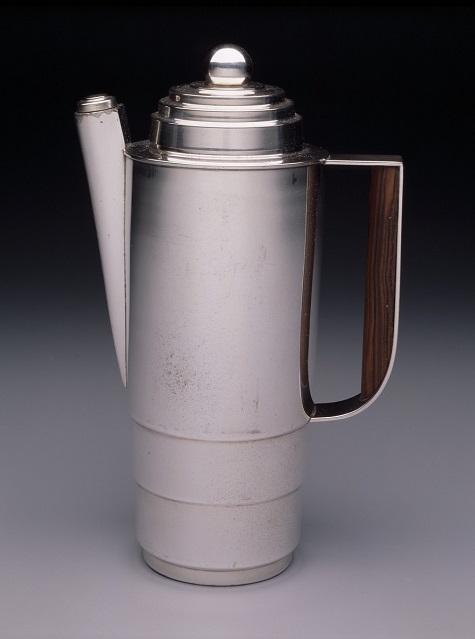
Silver Style cocktail shaker, Karl Emmanuel Martin (Kem) Weber (designer), Friedman Silver Company (manufacturer), designed 1928, silverplate and rosewood, Dallas Museum of Art, gift of the Decorative Arts Guild of North Texas’ 1994 Midwest Trip, 1994.52.a-c
Cocktails grew in popularity well into the 20th century, but during Prohibition (1920-33), manufacturers of cocktail wares avoided the word “cocktail” in lieu of “beverage” in advertisements. Cocktail shakers like the Silver Style cocktail shaker were often disguised as coffee- or teapots, discreetly hiding their function. But shakers like this rooster-shaped cocktail shaker barely attempt to hide its intent. As American journalist H. L. Mencken said, “the business of evading Prohibition and making a mock of it has ceased to wear any aspects of crime, and has become a sort of national sport.” The rooster cocktail set seems to mockingly crow out an invitation for revelers to raise a glass!

Bottoms Up cocktail tumblers, McKee Glass Company (maker), c. 1928, pressed glass, Dallas Museum of Art, the Patsy Lacy Griffith Collection, bequest of Patsy Lacy Griffith, 2001.163.2
If you’re in the mood for something a bit bawdy, look for the Bottoms Up cocktail tumblers, which are anything but discreet. The original design featured nude ladies with legs spread apart, but that was eventually deemed too risqué, so the design was modified to this slightly less scandalous version. When using these cups, the only option is to drink it or hold a full cup, as the design does not allow the drinker to set down anything except an upside-down empty glass.
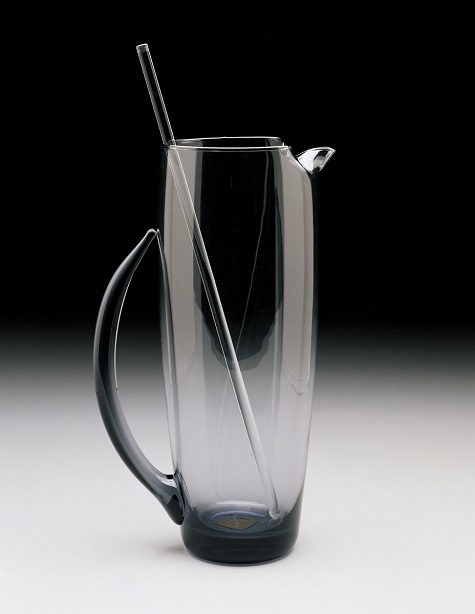
Normandie pattern beverage mixer with rod, Morgantown Glassware Guild (manufacturer), designed c. 1955, blown glass, Dallas Museum of Art, 20th-Century Design Fund 1995.176.a-b
For a retro throwback to the suburban cocktail party, check out the Normandie pattern beverage mixer, used by hosts eager to show their neighborly hospitality by mixing up drinks, Mad Men style. During the 1960s, pitchers or mixers eclipsed shakers due to the popularity of stirred cocktails, most notably gin or vodka martinis.
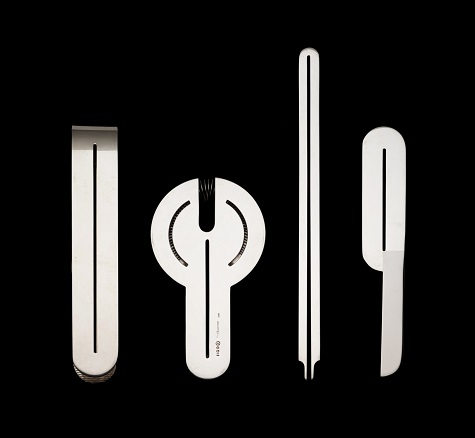
Bar tools, San Lorenzo (manufacturer), Lella Vignelli (designer), Massimo Vignelli (designer), Milan, Italy, introduced 1972, silver, Dallas Museum of Art, The Jewel Stern American Silver Collection, Decorative Arts Fund, 2002.29.78.1–4
Don’t leave without checking out the more recent cocktail wares, particularly the sleek lines of these bar tools, whose chic design and smooth, ultramodern lines were described as “the most elegant Christmas gift of Christmas 1972,” and were available only at Cartier in New York.
Come to the DMA for one last toast to cocktails before this exhibition closes on November 19!
Heather Bowling is the Digital Collections Content Coordinator for Decorative Arts and Design and Classical Art at the DMA.
